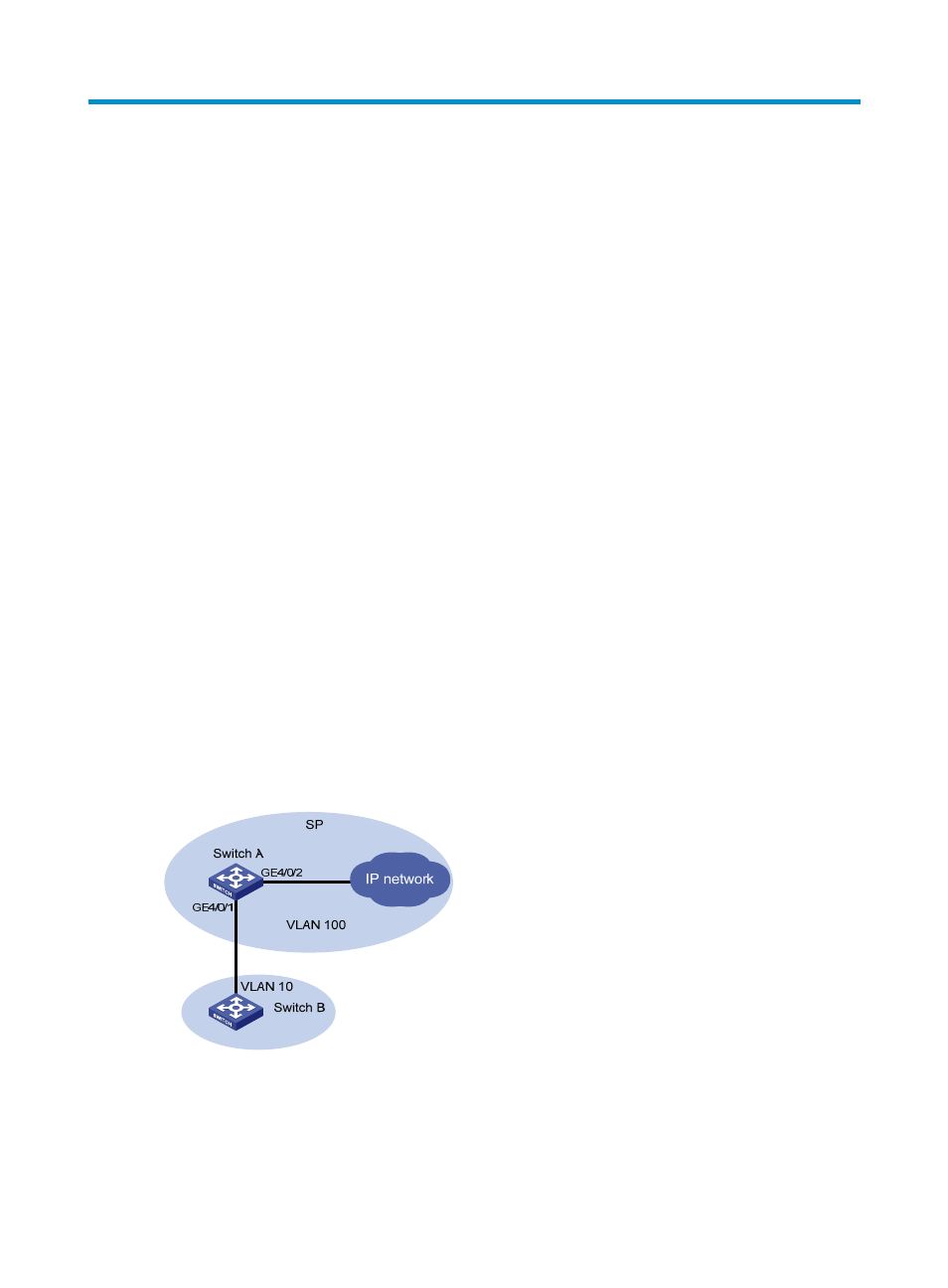Configuring vlan mapping, Overview, Application scenario of one-to-one vlan mapping – H3C Technologies H3C S12500 Series Switches User Manual
Page 162

149
Configuring VLAN mapping
The Layer 3 Ethernet interfaces of the switch do not support VLAN mapping.
Overview
VLAN mapping re-marks VLAN tagged traffic with new VLAN IDs. The switch provides the following
types of VLAN mapping:
•
One-to-one VLAN mapping—Replaces one VLAN tag with another. You can use one-to-one VLAN
mapping to sub-classify traffic from a particular VLAN for granular QoS control, or adapt the VLAN
schemes of two service providers.
•
One-to-two VLAN mapping—Tags single-tagged packets with an outer VLAN tag. One-to-two
VLAN mapping expands the VLAN tag space, and enables a service provider and its customers to
independently assign VLANs without the risk of VLAN assignment conflicts.
•
Two-to-two VLAN mapping—Replaces the outer and inner VLAN IDs of double tagged traffic with
a new pair of VLAN IDs. The switch supports replacing only the outer VLAN ID. You can use
two-to-two VLAN mapping on the switch to enable two remote sites in the same VLAN to
communicate at Layer 2 across two service provider networks that use different VLAN assignment
schemes.
Application scenario of one-to-one VLAN mapping
shows an application scenario in which a customer uses a VLAN scheme different than the
service provider. For example, the customer uses VLAN 10 to transmit voice traffic, whereas the service
provider uses VLAN 100. Switch A must replace the VLAN 10 tag of incoming traffic with the VLAN 100
tag, before transmitting the traffic in the service provider network.
Figure 48 Application scenario of one-to-one VLAN mapping